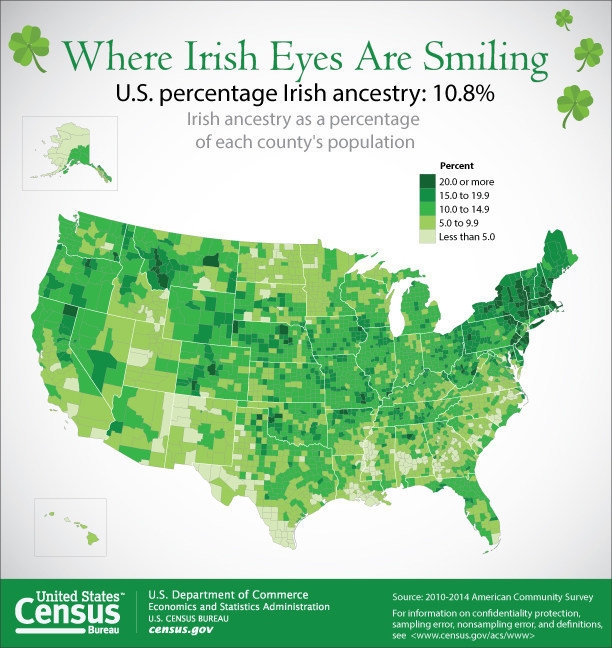Irish-Americans Today
Congress proclaimed March as Irish-American Heritage Month in 1991, and President Barack Obama issued a proclamation commemorating the occasion this year.
Originally a religious holiday to honor St. Patrick, who introduced Christianity to Ireland in the fifth century, St. Patrick’s Day has evolved into a celebration of all things Irish. The world’s first St. Patrick’s Day parade occurred on March 17, 1762, in New York City, featuring Irish soldiers serving in the English military. This parade became an annual event, with President Truman attending in 1948.
33.1 million, or 10.4% of U.S. residents claimed Irish ancestry in 2014. This number was more than seven times the population of Ireland itself (4.6 million). Irish was the nation’s second-most frequently reported European ancestry, trailing German.
Median income for households headed by an Irish-American is $62,141, higher than the median household income of $53,657 for all households. In addition, 7.0 percent of family households headed by a householder of Irish ancestry were in poverty, lower than the rate of 11.3 percent for all Americans.
There are sixteen places in the United States that share the name of Ireland’s capital, Dublin. The most populous of these places in 2014 was Dublin, California, at 54,695.
If you’re still not into the spirit of St. Patrick’s Day, then you might consider paying a visit to Emerald Isle, NC, with 3,717 residents.
Other places that might conjure up images of the old country include the township of Irishtown, IL, several places named Clover (in South Carolina, Illinois, Minnesota, Pennsylvania, Virginia,West Virginia and Wisconsin) or one of the six places that are named Shamrock (in Oklahoma, Texas [two], Minnesota, Missouri and Nebraska).
Source: U.S. Census Bureau


















Follow Us